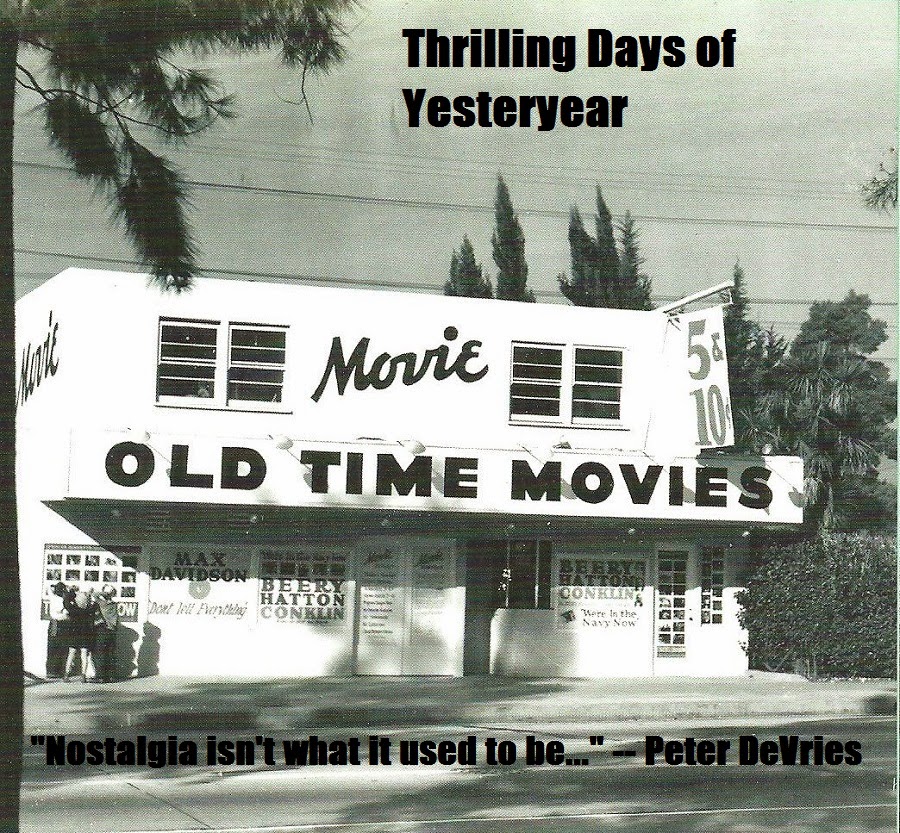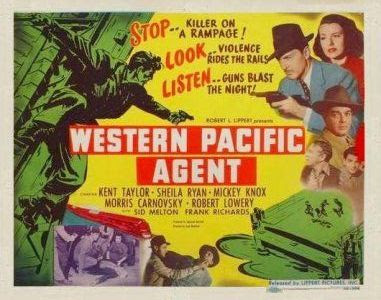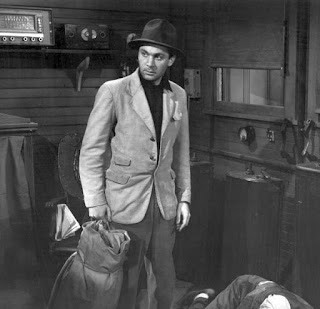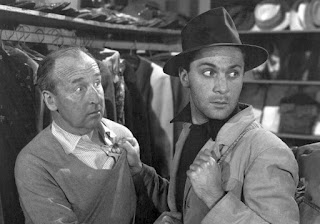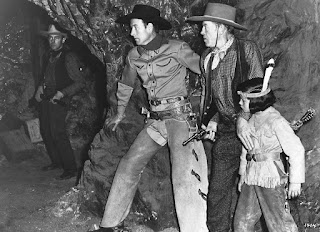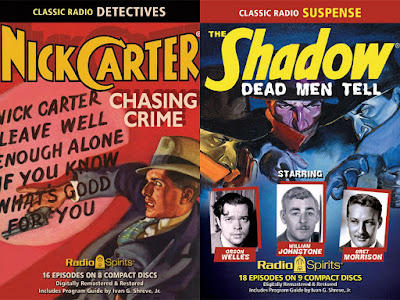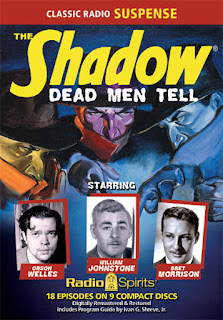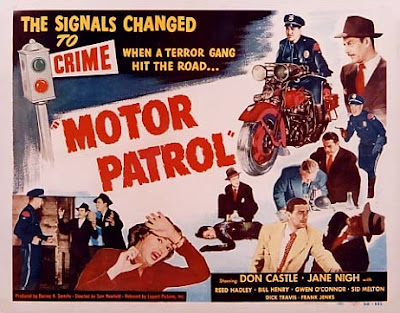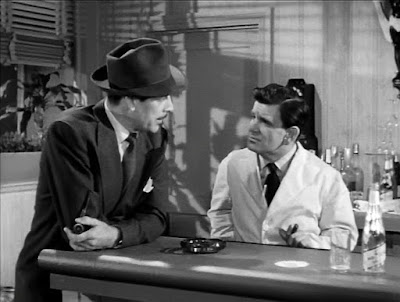Bindlestiff. It’s a slangy word for a hobo or tramp, and apparently, it’s been out of usage for so long Microsoft Word is asking me “What the hell, Ivan?” Be that as it may, the expression gets quite a workout in Western Pacific Agent (1950); as a train passenger (Jason Robards, Sr.) explains to his lady friend (Vera Marshe), most bindlestiffs are merely migrant workers…but some of them, to borrow the nomenclature of our orange Commander-in-Chief, are “bad hombres.” The gentleman proceeds to tell the woman (and the movie audience) of one such wicked transient.
Though he’s recognized by his fellow rail-riders under his nom de hobo “The West Coast Kid,” the Kid
is better known to his friends and family in Chester, California as Frank
Wicken (Mickey Knox) …and he’s returned to his hometown to put the bite on his
old man (Morris Carnovsky), who owns and operates the town’s general
store. No dice, Papa Joe tells his son—not
one thin dime until Frank agrees to straighten up and get a J-O-B. The ambitious Frank decides to take a
shortcut and rob railroad agent Bill Stuart (Robert Lowery) of a $50,000 fruit
pickers payroll; in doing so Wicken not only clubs Bill until his brains turn
to guacamole but sticks a shiv in the stationmaster (Anthony Jochim) for good
measure. Fleeing with the cash, Frank
leaves the murder weapon behind…because he isn’t very bright. (I’m no lawyer…but I think Wicken just might
swing for those killings.)
 |
| Stuart Galbraith IV at DVD Talk says of the ubiquitous Sid Melton: "He grows on you." (So does kudzu.) |
To solve the murders, a special railroad agent named Rod Kendall (Kent Taylor) is brought in…and you’d think if he was that much of a big deal this movie would have been titled Western Pacific Special Agent. Kendall, with the help of the local sheriff (Dick Elliott) and a stooge played by Sid Melton (because this is a Lippert film, after all) gets down to cases; the company has had the foresight to pass out a list of the serial numbers on the bills to local business so that Frank is unable to spend any of his ill-gotten gains. Oh, the irony! (All we need now is Bill Forman chortling about how terribly Wicken screwed up like a classic broadcast of The Whistler.) Frank is ultimately unable to outrun the long arm of the law because…well, you know the drill—weed of crime, bitter fruit, yada yada yada.
Unlike a lot of the programmers on these Forgotten
Noir DVDs (available for purchase at The
Sprocket Vault or to rent from the new ClassicFlix
Underground), Western Pacific Agent
is a dandy little B-noir (yes, I think this one qualifies) from director Sam
Newfield (and his producer, brother Sigmund Neufeld) that’s a hell of an
entertaining movie to watch. No less
than an authority than the late John Cocchi—author of one of my favorite film
reference books, Second Feature—spoke
most highly of the film: “One of the brothers’ very best is this crime drama in
which the heroes become secondary to the villain.” I think he pretty much nails it; the top cop
is played by Kent Taylor who, despite his lengthy movie resume, I can never
think beyond TV’s Boston Blackie. Taylor’s
Randall is competent but uninspiring—he seems annoyed by Melton’s comic relief
(I’d gamble he’s not the only one) and his “romance” with Martha Stuart (Sheila
Ryan)—yes, that is the character’s name—is dull stuff.
The top performances in Agent go to Mickey Knox, who would later enjoy great success in Italian films in the 1960s/1970s (he was a favorite of director Sergio Leone), and Morris Carnovsky, a respected stage actor whose movie career was cut off at the knees by the blacklist. Knox is so convincing as an amoral drifter it’s scary (Stuart Galbraith IV at DVD Talk notes that Woody Harrelson’s character in Natural Born Killers [1994] is named “Mickey Knox” and wonders if Oliver Stone ever saw Agent—I’ll bet this was Quentin Tarantino’s contribution) and the cruel twist of Fred Myton’s screenplay (from a story by Milton Raison) kind of makes you feel a little sorry for the little jerk. Carnovsky proves to be the consummate pro in that he demonstrates despite having to be in this B-picture he’s going to give 100%.
Dick Elliott is always a welcome presence, and vets like
Frank Richards and Ted Jacques turn in solid performances as two “bindlestiffs”
who become hoboes of interest in Randall’s investigation. (Look quickly and you’ll see our old buddy,
B-western heavy Charles King, with a bindle as well.) I’ll slip into a Stanley R. Sogg impression
and let you know “the ever popular Margia Dean!” has a brief bit as a female hobo…proving
that riding the rails was an equal opportunity occupation. Why Jason Robards, Sr. goes unmentioned while
his female companion gets a nod in the opening credits is a question I can’t
answer…though the cynic in me speculates the actress in question might have
been a friend of the producer, if you know what I mean and I think you do.
